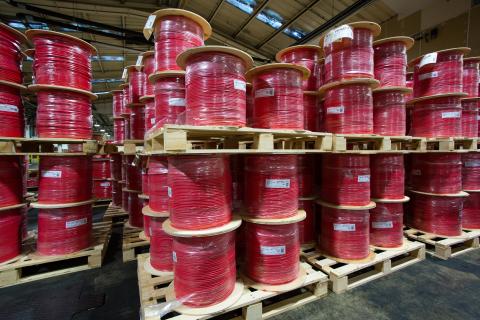What are the best cables for fire alarms?
When it comes to fire safety, every detail matters and choosing the fire detection and fire alarm system is vital. In this blog, we'll guide you through the factors to consider and recommend what cables should be used in fire alarms.
From smoke detectors to evacuation and response systems, each component plays a vital role in protecting lives and property. In the heart of this network lies a critical component – the cables that connect a fire alarm system. What makes them so crucial?
Understanding the importance of fire detector and fire alarm cable
Fire alarm systems rely on a complex network of sensors, control panels, and notification devices to detect and respond to fires promptly. Reliable cables ensure the seamless transmission of signals between these components, enabling a swift response in case of an emergency. When BS 5839-1:2002 came out over twenty years ago, it defined the 'critical signal path' for the first time. It said, every component and interconnection (e.g., call points, detectors and sounders) were part of the ‘critical signal path’ and they all need to be connected with fire-resistant cable.
As part of the building regulations, a fire risk assessment is essential and required by law. Installing a fire alarm system in a premises is common practise as a result of a fire risk assessment. Under the Regulatory Reform (Fire Safety) Order 2005, property owners are required to ensure the premises reach required standards of fire safety. In non-domestic premises the “responsible person” must put in place, and maintain, appropriate fire safety measures. The “responsible person” can be an employer, the building owner, the landlord, an occupier, or someone with control of the premises.
Compliance with British Standards
It’s important to comply with the Standards. British Standards BS 5839-1 is the Code of practice for design, installation, commissioning and maintenance of systems in non-domestic premises. It provides recommendations for the planning, design, installation, commissioning and maintenance of fire detection and fire alarm systems in and around non-domestic premises. This is vital to protect occupants.
What type of cable is used for fire alarms?

As previously stated, only fire resistant cables can be used in fire alarms. There are two types of fire resistant cables: “standard” and “enhanced”, with “standard” being the most common type. “Standard” fire resistant cables are required to meet a minimum 30-minute duration of survival when tested to BS EN 50200 (PH 30), for fire alarm circuits. Additionally, these cables must meet a 60-minute duration of survival (PH 60), for emergency lighting circuits. “Standard” cables are also required to meet the 30-minute duration of survival when tested to BS EN 50200 Annex E. This test exposes the cable to water spray.
“Enhanced” cables are required to meet a minimum 120-minute duration of survival when tested to BS EN 50200 (PH 120) for both fire alarms and emergency lighting circuits. These cables must also meet 120-minute duration of survival when tested to BS 8434-2. This is for the water spray test.
FP200 Gold and FP PLUS
Prysmian designs and manufactures two types of fire performance cables for fire alarms: FP200 Gold and FP PLUS.
FP200 Gold is a “Standard” fire resistant cable specially designed to meet the performance requirements of BS 5839-1 and is manufactured in accordance with BS 7629-1. It is the most common FP cable used in premises such as public buildings including offices and schools.
For large and complex buildings with multiple phases of evacuation such as hospitals, an enhanced fire resistant cable is required. FP PLUS is an “Enhanced” fire resistant cable and is the ideal choice for these buildings.
Insudite Insulation
The original FP200 was invented and patented in the late 1970s with a soft silicone insulation, which required a ferrule for protection. Twenty years later, FP200 Gold launched with a tough fire resistant insulation called Insudite which needed no additional protection. Prysmian no longer uses the soft silicone – which insulation is on your cable?
Prysmian Insudite is a robust composite insulation, which provides a tough, highly durable and damage resistant fire resistant insulation that is unique to Prysmian FP200 Gold and FP PLUS fire performance cables. Insudite helps to preserve the longevity of the cable. It does this by adding extra resistance to damage from blunt impacts, accidental tearing or cutting, which can be the cause of system faults and delay commissioning.
In short, selecting the right cables for a fire alarm system is a crucial step in ensuring the safety of a property and its occupants. Investing in high-quality fire alarm cables can help to save lives and prevent extensive damage in the event of a fire. The Prysmian FP cable range is the result of almost 50 years of continuous development of complex materials, manufacturing technology and fire testing to produce easy to install reliable cables suitable for fire alarms, emergency lighting, life safety and fire fighting systems. For reliability at its core, choose Prysmian.


